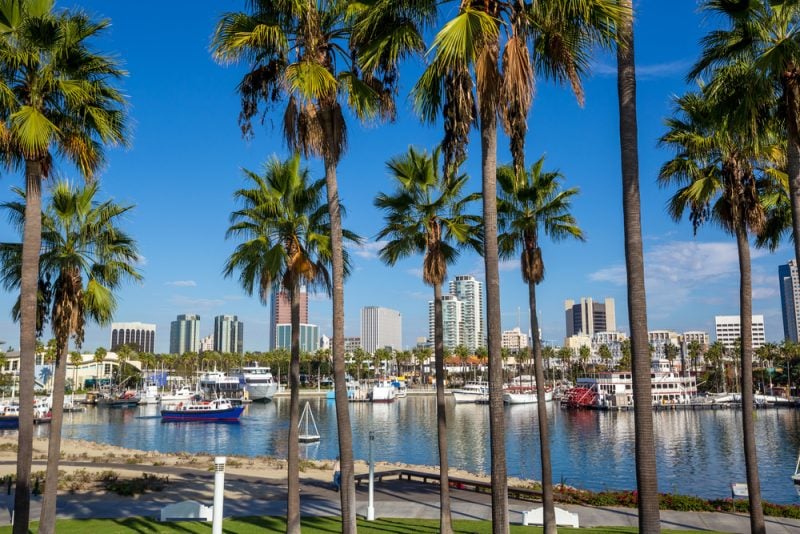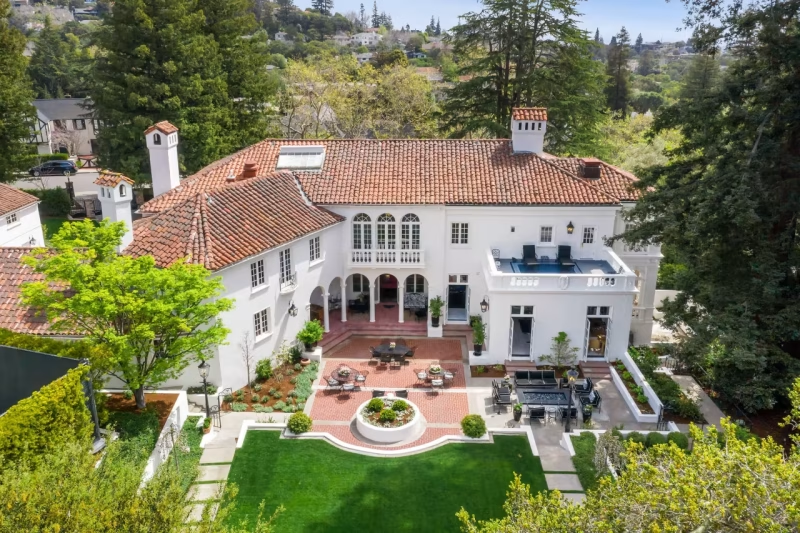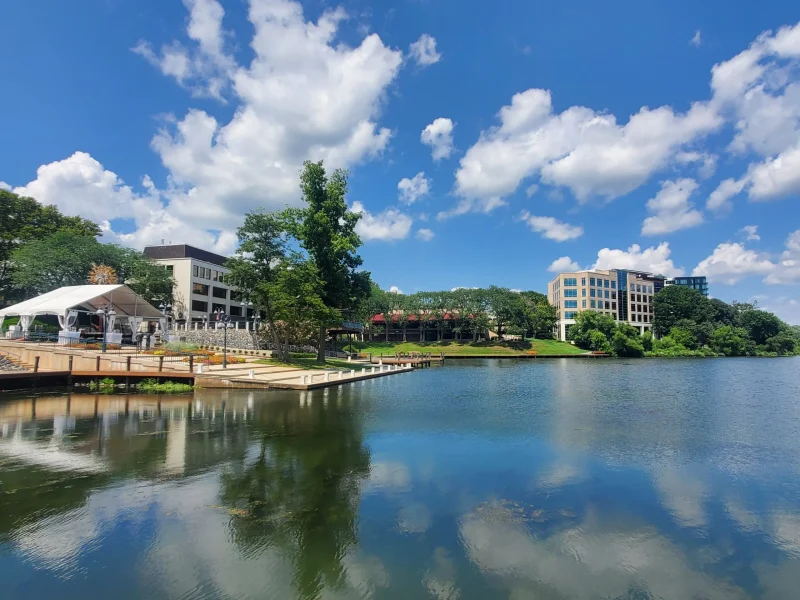The 30 Richest Places to Live in Alabama: Guide to Affluent Communities
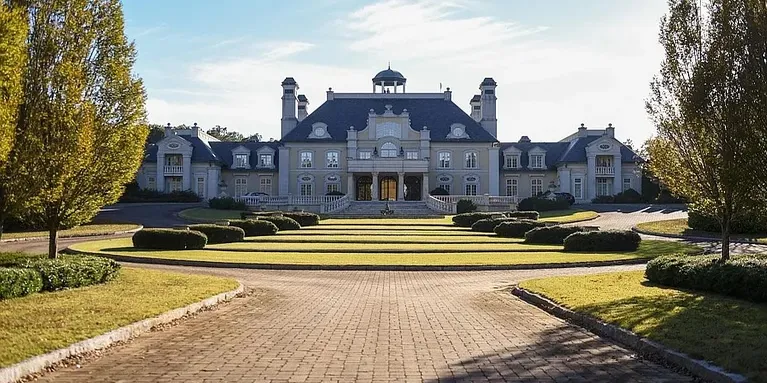
Alabama contains several affluent communities that offer residents high median incomes, quality amenities, and desirable living conditions. These wealthy areas span across different regions of the state, from suburban enclaves near major cities to independent municipalities with their own distinct character.
Understanding where Alabama’s wealthiest residents live provides valuable insight for those considering relocation, investment opportunities, or simply curious about the state’s economic landscape.
The communities featured range from well-established cities like Mountain Brook and Vestavia Hills to emerging areas that have experienced significant growth in recent years.
Each location offers unique advantages that contribute to both property values and overall quality of life for residents.
Here are the 30 richest places to live in Alabama:
30. Anniston
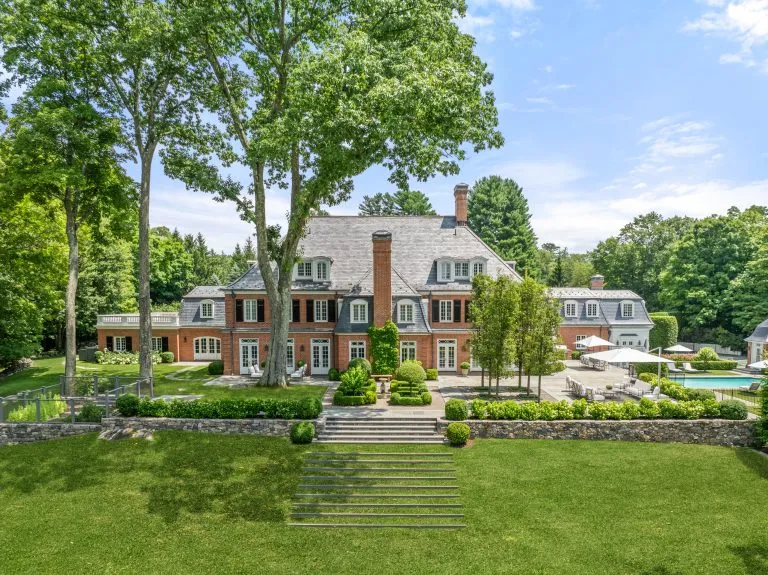
Anniston ranks as the 30th richest place to live in Alabama. The city has a median household income of $52,338 according to recent data.
This income level places Anniston in the 29th percentile nationally. About 70% of cities across the United States have higher median household incomes.
Education levels in Anniston contribute to its economic profile. Approximately 22% of adults hold bachelor’s degrees or higher. This compares to 31% nationwide.
The city serves as a regional center in east-central Alabama. Anniston has historically been known for its manufacturing and military connections.
Housing costs in the Anniston metropolitan area vary by neighborhood. Home prices remain relatively affordable compared to major Alabama cities like Birmingham or Huntsville.
29. Guntersville
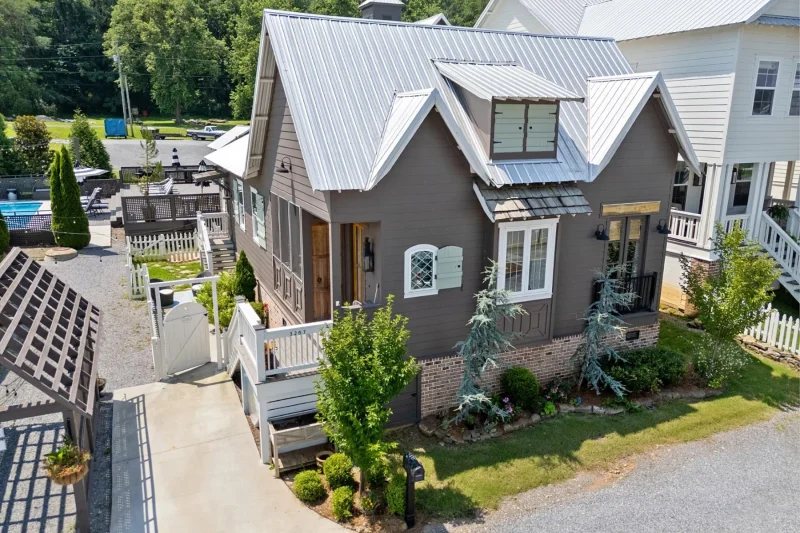
Guntersville sits along the shores of Guntersville Lake in northern Alabama. The city has a population of 8,531 residents and serves as a popular destination for lake activities and outdoor recreation.
The median household income in Guntersville is $50,142, which falls below the national average of $67,500. The city experiences a poverty rate of 19.5%, notably higher than national standards.
Housing values vary significantly across different neighborhoods within Guntersville. The most desirable areas command higher home prices and typically offer better quality of life amenities.
The city’s economy benefits from its location on Guntersville Lake, which attracts tourists and supports recreational businesses. This lakefront setting contributes to property values in prime waterfront locations.
Guntersville’s ranking reflects its position as a modest-income community with pockets of higher-value real estate, particularly in lakefront neighborhoods.
28. Cullman
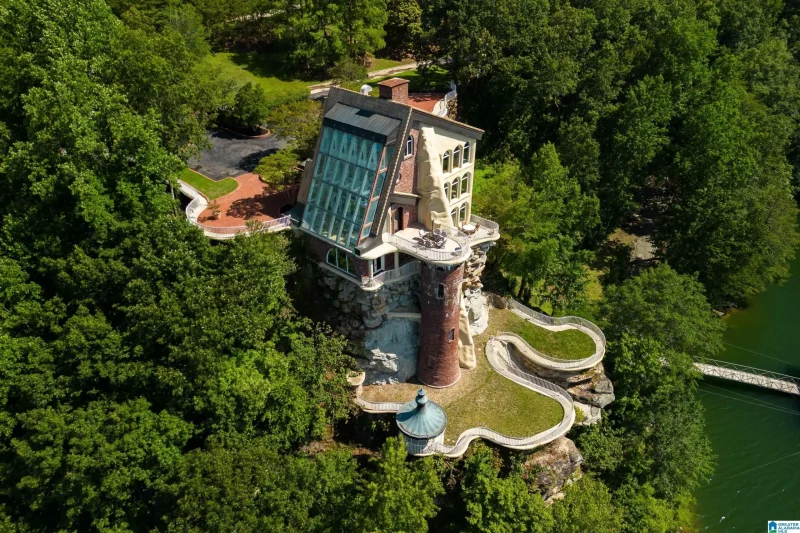
Cullman stands as a notable city in north-central Alabama with a population of approximately 17,000 residents. The city serves as the county seat of Cullman County and has built a reputation for economic stability.
The median household income in Cullman reaches around $45,000 annually. This places the city above the state’s median household income levels, making it an attractive destination for families seeking affordable prosperity.
Cullman’s economy relies heavily on manufacturing, healthcare, and retail sectors. Major employers include Topre America Corporation and Cullman Regional Medical Center, which provide stable employment opportunities for residents.
The cost of living remains relatively low compared to larger Alabama cities. Housing prices average below national standards while maintaining quality neighborhoods and community amenities that support middle-class lifestyles.
27. Florence
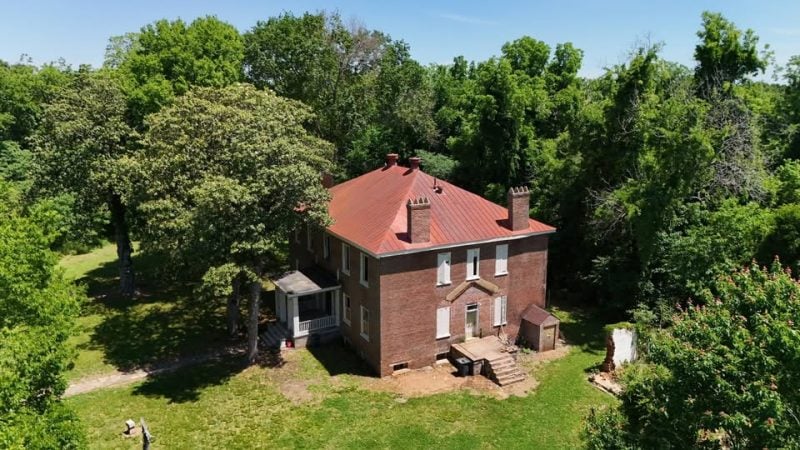
Florence sits in northwestern Alabama with a population of 42,437 residents. The city ranks as the 11th largest community in the state.
As a college town, Florence hosts numerous students attending area universities. This academic presence contributes to the local economy and cultural atmosphere.
The city features 18 distinct neighborhoods with varying property values. Housing costs and neighborhood quality differ significantly across Florence’s residential areas.
Florence offers a medium-sized city lifestyle with educational opportunities. The presence of higher education institutions helps stabilize the local job market.
The city’s real estate market reflects its status as both a college town and regional center. Different neighborhoods cater to students, families, and working professionals seeking affordable living options in Alabama.
26. Huntsville

Huntsville stands as a significant economic center in northern Alabama. The city’s median household income reaches $69,002, placing it above the national average.
This income level puts Huntsville households in the 63rd percentile nationwide. The city benefits from a highly educated population that drives its economic success.
Education levels in Huntsville exceed national standards considerably. About 41% of adults hold bachelor’s degrees or higher, compared to 31% across the United States.
The city’s economy relies heavily on aerospace, defense, and technology industries. Major employers include NASA’s Marshall Space Flight Center and various defense contractors.
Huntsville’s nickname “Rocket City” reflects its role in space exploration and technology development. This concentration of high-tech industries attracts well-educated professionals and supports higher income levels throughout the area.
25. Albertville
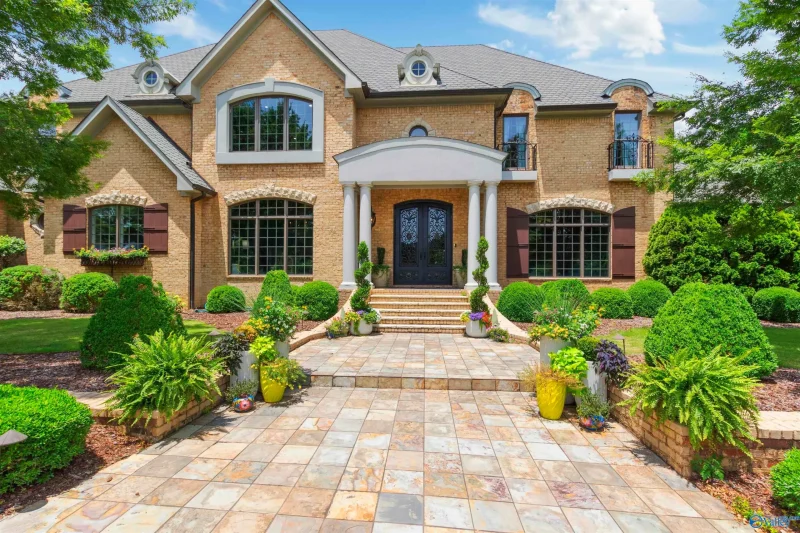
Albertville sits in Marshall County in northeastern Alabama. The city serves as the county seat and has a population of approximately 22,000 residents.
The local economy relies heavily on manufacturing and agriculture. Several major employers operate facilities in the area, including automotive parts manufacturers and food processing companies.
Housing costs in Albertville remain below the state average. The median home value typically ranges in the low $100,000s, making homeownership accessible for many families.
The city features a historic downtown district with local businesses and restaurants. Albertville also hosts an annual fire hydrant festival that draws visitors from surrounding areas.
Lake Guntersville State Park lies nearby, offering recreational opportunities for residents. The proximity to outdoor activities adds appeal for those seeking affordable living with natural amenities.
24. Moody
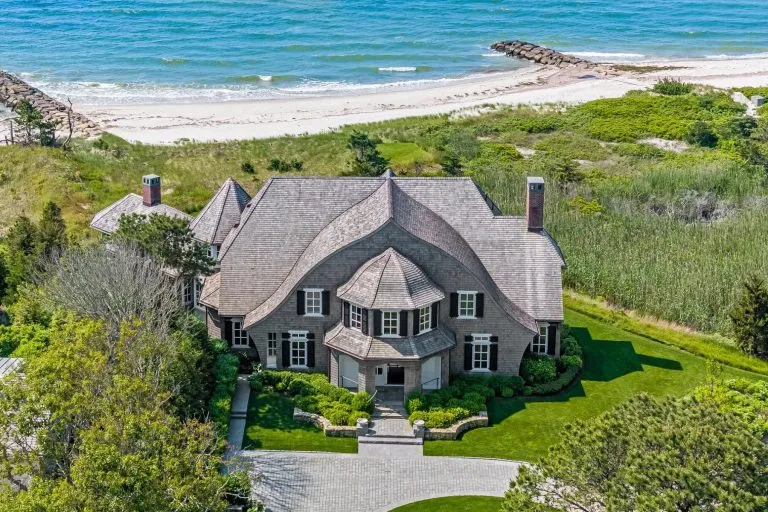
Moody has earned recognition as one of the 30 Best Communities in Alabama according to Money, Inc. The city’s strategic location provides residents easy access to major metropolitan areas.
Moody sits within driving distance of both Birmingham and Atlanta. This proximity offers employment opportunities while maintaining a small-town atmosphere.
The community has experienced consistent population growth over recent years. Families are drawn to Moody’s affordable housing market and residential neighborhoods.
The city attracts residents seeking homeownership without the high costs of larger urban centers. Moody’s housing prices remain competitive compared to nearby metropolitan areas.
The area maintains its small-town character while offering modern amenities. Local businesses and services support the growing residential population throughout the community.
23. Fultondale

Fultondale is a city located in Jefferson County, Alabama, situated north of Birmingham. The community offers residents access to suburban living while maintaining proximity to the larger metropolitan area.
The city features various neighborhoods with different home values and characteristics. Local residents have identified certain areas as more desirable based on property values and neighborhood quality.
Fultondale provides a mix of residential options for families and individuals seeking communities in the Birmingham area. The city benefits from its location near major transportation routes and employment centers.
The area offers access to schools, shopping, and recreational facilities typical of suburban Alabama communities. Real estate values in Fultondale vary by neighborhood and specific location within the city limits.
22. Toney
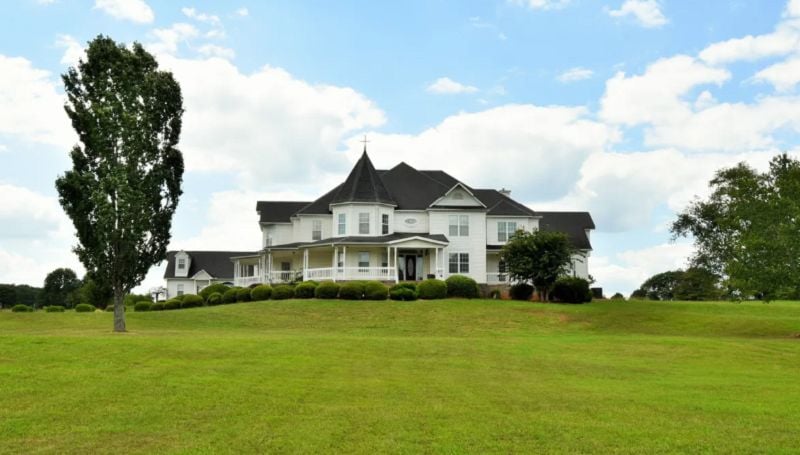
Toney is a small unincorporated community located in Madison County, Alabama. The area sits in the northern part of the state near Huntsville.
This community benefits from its proximity to Redstone Arsenal and the research facilities in Huntsville. Many residents work in aerospace, defense, and technology sectors.
The median household income in Toney exceeds the Alabama state average. Property values have remained stable due to the strong local job market.
Toney offers a suburban feel with larger lots and newer construction homes. The community attracts families seeking quiet neighborhoods with good schools.
Residents have access to Madison County’s educational system. The area provides a balance between small-town living and access to urban amenities in nearby Huntsville.
The location offers convenient access to major highways for commuting purposes.
21. Irondale

Irondale sits in Jefferson County, serving as a suburban community near Birmingham. The city has maintained steady economic growth over recent decades.
The median household income in Irondale reflects middle-class stability. Residents benefit from proximity to Birmingham’s job market while enjoying lower housing costs than neighboring affluent areas.
Manufacturing and service industries provide the primary employment base. The city’s location offers convenient access to major highways and commercial centers.
Housing options range from established neighborhoods to newer developments. Property values remain reasonable compared to other Jefferson County municipalities.
Irondale’s downtown area features local businesses and restaurants. The community maintains several parks and recreational facilities for residents.
The city’s school system serves local families, with additional educational options available in the broader Birmingham metropolitan area. Public services and infrastructure support the community’s residential character.
20. Myrtlewood
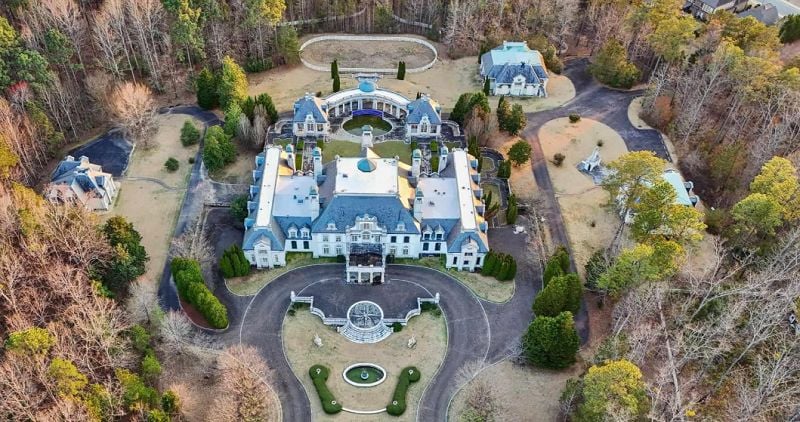
Myrtlewood stands as one of Alabama’s more affluent residential communities. This suburban area attracts residents seeking upscale living with convenient access to urban amenities.
The community features well-maintained neighborhoods with higher property values than state averages. Many homes showcase quality construction and desirable architectural features.
Residents typically enjoy above-average household incomes compared to much of Alabama. The area draws professionals and families who value quality schools and safe neighborhoods.
Myrtlewood’s location provides easy commuting access to major employment centers. This connectivity helps maintain property values and attracts new residents to the area.
The community offers a blend of suburban comfort and accessibility. Local amenities and services cater to residents who expect higher standards of living and community maintenance.
19. Calera
Calera stands as one of Alabama’s emerging affluent communities in Shelby County. The city has experienced significant growth and development over recent years.
Located approximately 35 miles south of Birmingham, Calera offers residents convenient access to major metropolitan amenities. The city maintains a strategic position along Interstate 65.
Housing costs in Calera reflect its desirable status among Alabama communities. Property values have steadily increased as more families discover the area’s appeal.
The local economy benefits from diverse industries and proximity to Birmingham’s business district. Many residents commute to higher-paying jobs in nearby cities.
Calera provides quality public schools and family-friendly neighborhoods. The community attracts professionals and families seeking suburban living with urban conveniences.
18. Oak Mountain
Oak Mountain stands as one of Alabama’s more affluent residential areas. The community attracts families seeking upscale living with convenient access to Birmingham’s metropolitan amenities.
Housing values in Oak Mountain reflect the area’s desirable status. Well-maintained neighborhoods feature spacious homes that appeal to professionals and executives working in nearby business districts.
The location offers proximity to Oak Mountain State Park, Alabama’s largest state park. This natural attraction provides residents with hiking trails, lakes, and recreational facilities within minutes of their homes.
Educational opportunities contribute to Oak Mountain’s appeal among wealthy families. The area benefits from strong school systems that consistently perform well in state rankings.
Oak Mountain’s strategic positioning between Birmingham and other major Alabama cities makes it attractive to high-income earners. The community maintains its residential character while providing easy commuter access to employment centers.
17. Greystone
Greystone stands as one of the most desirable neighborhoods in the Birmingham-Hoover metropolitan area. The community combines architectural beauty with natural surroundings and comprehensive amenities.
Residents benefit from strong school systems that enhance property values. The neighborhood maintains a well-established community identity that attracts affluent families.
Greystone offers a socially active lifestyle with premium amenities. The area provides security and connectivity that wealthy residents value.
The neighborhood’s location provides convenient access to Birmingham’s business districts. Natural surroundings create an attractive environment for upscale living.
Property values reflect the community’s desirable characteristics. The combination of quality schools, amenities, and location commands premium prices in the local real estate market.
16. Daphne
Daphne sits along Alabama’s Gulf Coast with a population of approximately 26,578 residents. The city offers a comfortable standard of living compared to state and national averages.
The typical household in Daphne earns $71,105 annually. This exceeds the national median household income of $67,500.
Daphne maintains a relatively low poverty rate at 8.6%. This figure stands 39% below the national average, indicating strong economic stability.
About 35.1% of households earn less than $50,000 per year. This compares favorably to the national rate of 39%.
Home prices in Daphne exceed Alabama’s state average of $185,232. The housing market reflects the city’s desirable location and economic prosperity.
The city’s proximity to Mobile Bay and the Gulf of Mexico contributes to its appeal among residents seeking waterfront living.
15. Briarwood
Briarwood stands out as one of Alabama’s most expensive residential markets. The community has experienced remarkable property value growth over the past decade.
Property values began at $236,004 in 2015. By 2020, home prices had increased modestly to $289,549.
The real acceleration occurred between 2020 and 2025. Property values jumped dramatically to $432,308, representing substantial growth for homeowners.
This ten-year appreciation totals 83.18 percent. The growth rate demonstrates Briarwood’s strong position in Alabama’s luxury housing market.
The community attracts affluent residents seeking premium real estate investments. Briarwood’s consistent property value increases reflect high demand and limited inventory in this exclusive area.
14. Mountain Brook Village
Mountain Brook Village serves as the commercial heart of Mountain Brook, one of Alabama’s most affluent communities. This upscale shopping district attracts residents from across the Birmingham metropolitan area.
The village features boutique stores, fine dining restaurants, and professional services. Tree-lined streets and well-maintained sidewalks create an inviting atmosphere for pedestrians and shoppers.
Real estate values in the village area reflect Mountain Brook’s status as Alabama’s wealthiest city. Properties here command premium prices due to the prime location and proximity to high-end amenities.
The village maintains its small-town charm while offering sophisticated retail and dining options. Local businesses cater to the affluent demographic that characterizes this Birmingham suburb.
Mountain Brook Village represents the lifestyle and economic prosperity that defines this exclusive community.
13. Opelika
Opelika ranks among Alabama’s wealthier communities with a growing economy centered around manufacturing and education. The city benefits from its proximity to Auburn University and major employers in the automotive industry.
The typical household in Opelika earns $50,488 annually. While this falls below the national median of $67,500, it represents solid middle-class income levels for Alabama standards.
Opelika’s real estate market shows promising investment potential across several neighborhoods. Family-friendly communities and areas attracting young professionals offer diverse growth opportunities.
The city maintains a population of approximately 30,589 residents. Local economic development initiatives continue to attract new businesses and residents to the area.
Manufacturing plants and proximity to Auburn create stable employment opportunities. The combination of educational resources and industrial growth positions Opelika as an emerging economic center in eastern Alabama.
12. Trussville
Trussville sits northeast of Birmingham in Jefferson County at the foothills of Ruffner Mountain Nature Preserve. The city has maintained its reputation as one of Alabama’s wealthier communities since its founding in 1836.
Home prices in Trussville significantly exceed Alabama’s state average of $185,232. This price differential reflects the area’s desirability and economic prosperity.
The city attracts affluent residents with its top-rated school system and championship golf courses. These amenities contribute to Trussville’s appeal among higher-income families.
Trussville’s location provides convenient access to Birmingham while offering a more suburban lifestyle. The community combines historical charm with modern amenities that justify its premium housing costs.
The city’s consistent ranking among Alabama’s richest places stems from its educated population and quality infrastructure. Trussville represents a desirable blend of economic opportunity and residential comfort.
11. Spanish Fort
Spanish Fort ranks among Alabama’s wealthiest communities with a median household income of $117,326. This places the city in the 95th percentile nationwide for household earnings.
The city maintains remarkably low unemployment at just 1.9 percent. Housing costs reflect the area’s affluence, with median home values reaching $386,694.
Spanish Fort’s population of 10,083 residents enjoys a cost of living that is 1.1 times higher than the national average. The median rent sits at $1,229 monthly.
Education levels contribute significantly to the city’s prosperity. Nearly 47 percent of adults hold bachelor’s degrees or higher, compared to the national average of 31 percent.
The combination of high incomes, low unemployment, and strong educational attainment establishes Spanish Fort as a desirable location for affluent residents seeking quality of life in Alabama.
10. Fairhope
Fairhope stands out as one of Alabama’s most desirable wealthy communities. The city attracts affluent residents with its combination of coastal charm and economic prosperity.
The median household income in Fairhope reaches $85,456. This figure places the city well above Alabama’s state average and reflects the community’s strong economic foundation.
Housing costs in Fairhope exceed national averages by a small margin. The median rent sits at $1,575 monthly, indicating a premium market for quality living spaces.
The city maintains a relatively low unemployment rate of 4.6%. This economic stability contributes to Fairhope’s appeal among Alabama’s wealthier residents.
Fairhope’s real estate market significantly outperforms the state average. Home prices far exceed Alabama’s typical home value of $185,232, demonstrating the premium residents pay for this coastal location.
The poverty rate remains at 10.7%, showing economic diversity within the community while maintaining its wealthy status.
9. Chelsea
Chelsea stands as one of Alabama’s most affluent suburban communities. The city consistently ranks among the top ten wealthiest places in the state.
Located in Shelby County, Chelsea offers residents a blend of rural charm and modern amenities. The community has experienced significant growth over recent decades.
The city attracts families seeking high-quality schools and safe neighborhoods. Chelsea’s median household income exceeds state averages by substantial margins.
Housing prices reflect the area’s desirability and economic prosperity. Many residents commute to Birmingham for work while enjoying Chelsea’s quieter residential atmosphere.
The city maintains well-funded public services and recreational facilities. Local amenities include parks, shopping centers, and dining establishments that serve the affluent population.
Chelsea’s strategic location provides easy access to major highways and metropolitan areas. This accessibility contributes to its appeal among higher-income professionals and families.
8. Pelham
Pelham stands as one of Alabama’s most affluent suburban communities, located in Shelby County just south of Birmingham. The city attracts wealthy residents with its combination of excellent schools and upscale neighborhoods.
The median household income in Pelham significantly exceeds the state average. Many residents work in Birmingham’s financial and healthcare sectors while enjoying a quieter suburban lifestyle.
Pelham offers high-end shopping destinations and fine dining establishments. The city features several luxury residential developments with custom homes valued well above regional averages.
Oak Mountain State Park borders the community, providing recreational opportunities that appeal to affluent families. The area’s low crime rates and well-maintained infrastructure contribute to its desirability among wealthy residents seeking quality of life outside Birmingham’s urban core.
7. Alabaster
Alabaster stands out as one of Alabama’s wealthiest suburban communities. The city attracts residents who value comfortable living and financial stability.
Home to approximately 34,000 people, Alabaster offers a family-friendly environment. The community is known for its welcoming neighborhoods and strong sense of camaraderie among residents.
The city provides an ideal setting for those seeking suburban affluence without the hustle of metropolitan areas. Alabaster’s economic prosperity stems from its strategic location and well-developed infrastructure.
Residents enjoy access to quality amenities and services throughout the city. The area maintains a reputation for safe neighborhoods and well-maintained properties.
Alabaster’s wealth is reflected in its housing market and local businesses. The city continues to attract professionals and families looking for upscale suburban living in Alabama.
6. Madison
Madison ranks as the fourth wealthiest city in Alabama with a median household income of $99,188. The city has a population of 49,327 residents.
Niche ranks Madison as the best suburb to buy property in Alabama. This recognition reflects the city’s strong real estate market and desirable living conditions.
Home prices in Madison exceed the state average of $185,232. The higher property values indicate the area’s affluence and demand among homebuyers.
The city attracts residents who value both financial stability and quality amenities. Madison combines economic prosperity with recreational and cultural attractions.
Real estate market data shows Madison consistently performs well compared to other Alabama cities. The combination of high incomes and property values places Madison among Alabama’s most affluent communities.
5. Cahaba Heights
Cahaba Heights stands as one of Alabama’s most affluent neighborhoods, located within Vestavia Hills. The community boasts a median household income of $84,573, which exceeds the state median by 26.4%.
The neighborhood’s median real estate price reaches $543,265. This figure surpasses 94.5% of Alabama neighborhoods and 69.1% of U.S. neighborhoods overall.
Rental properties in Cahaba Heights command premium prices. The average rental cost currently sits at $2,153 per month.
Per capita income in the area totals $59,578 as of 2023. This represents substantial growth from previous decades, demonstrating the community’s continued economic prosperity.
The ZIP code 35243 encompasses much of Cahaba Heights. Residents enjoy access to quality schools and upscale amenities that complement the area’s higher income levels.
4. Hoover
Hoover stands as one of Alabama’s most affluent suburban communities. The city attracts wealthy residents with its excellent school system and upscale neighborhoods.
Located in Jefferson and Shelby counties, Hoover offers premium shopping at the Riverchase Galleria. This major retail destination draws visitors from across the Birmingham metropolitan area.
The median household income in Hoover significantly exceeds the state average. Well-planned residential developments feature luxury homes with modern amenities.
Hoover’s strategic location provides easy access to Birmingham’s business district. Many professionals choose this city for its combination of suburban comfort and urban convenience.
The community maintains high property values through strict zoning regulations. Quality municipal services and low crime rates contribute to its desirable reputation among Alabama’s wealthy families.
3. Homewood
Homewood stands as one of Alabama’s most affluent communities. This suburban city attracts wealthy residents with its prime location and upscale amenities.
The city consistently ranks among Alabama’s wealthiest places. Homewood offers residents access to quality schools and well-maintained neighborhoods.
Home prices in Homewood exceed Alabama’s state average of $185,232. The real estate market reflects the city’s desirable status among affluent buyers.
Homewood provides easy access to Birmingham while maintaining its distinct suburban character. The city features tree-lined streets and established residential areas.
Residents enjoy proximity to shopping centers, restaurants, and cultural attractions. The community attracts professionals and families seeking upscale living options in central Alabama.
The city’s wealth stems from its educated population and strategic location. Homewood continues to be a preferred destination for Alabama’s high-income earners.
2. Vestavia Hills
Vestavia Hills ranks as Alabama’s second wealthiest city. The community offers residents a sophisticated suburban lifestyle surrounded by the Appalachian mountains.
The city benefits from its prime location near Birmingham. This proximity provides excellent access to healthcare facilities and cultural amenities without major compromises.
Vestavia Hills scores well across multiple quality-of-life categories. The elevated position creates slightly better weather conditions than surrounding areas.
The local infrastructure remains outstanding throughout the community. Residents enjoy well-maintained roads, reliable utilities, and quality public services.
The city attracts affluent families seeking upscale suburban living. Mountain views and natural beauty complement the area’s economic prosperity.
Birmingham’s job market contributes to the area’s wealth concentration. Many professionals choose Vestavia Hills for its combination of luxury and convenience.
1. Mountain Brook
Mountain Brook stands as Alabama’s wealthiest city with an average household income of $302,510. This Birmingham suburb consistently ranks among the most affluent communities in the state.
The city houses approximately 22,000 residents within the scenic Appalachian foothills. Mountain Brook features tree-lined streets and well-manicured neighborhoods that create an exclusive living environment.
Residents benefit from top-ranked schools and a strong sense of community. The area offers boutique shopping and maintains close proximity to natural landscapes.
Mountain Brook earned recognition as the 30th wealthiest suburb in America. The community maintains a notably low poverty rate of 2.6 percent, reflecting its economic prosperity.
The city’s elegant homes and refined atmosphere attract wealthy Alabama residents seeking premium living conditions.
Factors Influencing Wealth in Alabama Communities
Wealthy Alabama communities share common characteristics that drive prosperity, including proximity to major industries and educational institutions. Access to quality healthcare systems and demographic advantages also play crucial roles in determining median household incomes across the state.
Economic Drivers
Technology and aerospace industries concentrate wealth in specific regions, particularly around Huntsville’s Research Park. Defense contractors and NASA’s Marshall Space Flight Center create high-paying engineering and technical positions.
Financial services sectors dominate Birmingham’s economy. Major banking headquarters and investment firms establish well-compensated professional positions throughout Jefferson County communities.
Healthcare systems generate substantial economic activity in cities like Mountain Brook and Vestavia Hills. Hospital networks, medical practices, and pharmaceutical companies provide lucrative career opportunities.
Manufacturing facilities, particularly automotive plants, support middle and upper-middle-class communities. Toyota, Honda, and Mercedes-Benz operations create direct employment and supplier networks.
Real estate development drives wealth accumulation in growing suburbs. Property values increase as communities attract businesses and residents seeking quality amenities.
Demographic Trends
Educational attainment levels strongly correlate with community wealth across Alabama. Cities with higher percentages of college graduates consistently rank among the state’s wealthiest areas.
Professional occupations cluster in specific geographic regions. Engineers, doctors, lawyers, and business executives concentrate in suburbs surrounding major metropolitan areas.
Age demographics influence wealth patterns significantly. Communities with residents aged 35-65 typically show higher median household incomes due to peak earning years.
Population growth rates affect property values and economic development. Fast-growing communities attract new businesses and investment, creating upward pressure on local wealth indicators.
Dual-income households represent a larger percentage of wealthy communities. Two-professional families generate substantially higher combined earnings than single-income households.
Access to Education and Healthcare
School district quality directly impacts property values and attracts affluent families. Top-rated public schools in Mountain Brook and Vestavia Hills support premium real estate markets.
Private school availability provides additional educational options for wealthy families. Communities near prestigious private institutions often develop higher median incomes.
Healthcare facility proximity influences residential choices for high-income earners. Access to specialized medical centers and top-rated hospitals attracts professionals and retirees.
University connections create economic advantages for nearby communities. Auburn, Tuscaloosa, and Huntsville benefit from research institutions and educated workforces.
Transportation infrastructure affects accessibility to employment centers. Communities with convenient highway access to major cities maintain competitive advantages for attracting residents.
Quality of Life in Alabama’s Affluent Areas
Alabama’s wealthiest communities offer premium housing markets with median home values reaching $628,800 in top areas like Mountain Brook. These areas provide extensive recreational facilities, cultural institutions, and waterfront amenities that attract luxury homebuyers seeking superior living standards.
Housing and Real Estate Trends
Premium Home Values drive Alabama’s luxury real estate market. Mountain Brook leads with median home values exceeding $600,000, while Orange Beach coastal properties command similar prices.
Architectural Diversity characterizes these communities. Buyers find traditional Southern estates, contemporary waterfront homes, and modern suburban developments.
The luxury market focuses on specific geographic clusters:
- Birmingham Metro Suburbs: Mountain Brook, Vestavia Hills, Homewood
- Coastal Communities: Orange Beach, Spanish Fort
- Emerging Areas: Pike Road, Madison
Market Appreciation remains strong in established wealthy enclaves. These areas maintain property values through exclusive zoning, quality school districts, and limited inventory.
Luxury Amenities include private pools, expansive lots, and premium finishes. Waterfront properties offer boat docks and beach access.
Recreational and Cultural Amenities
Country Clubs and Golf Courses anchor social life in Alabama’s affluent areas. Mountain Brook and Vestavia Hills feature championship golf facilities and exclusive member clubs.
Waterfront Recreation defines coastal wealthy communities. Orange Beach provides Gulf access, fishing charters, and marina facilities for yacht owners.
Cultural Institutions serve educated, high-income residents. Birmingham suburbs access symphony halls, art museums, and theater districts.
Dining and Shopping cater to sophisticated tastes. Upscale restaurants, boutique shopping districts, and farmers markets populate these communities.
Outdoor Activities include hiking trails, tennis facilities, and sailing clubs. Many areas feature parks with walking paths and recreational centers.


